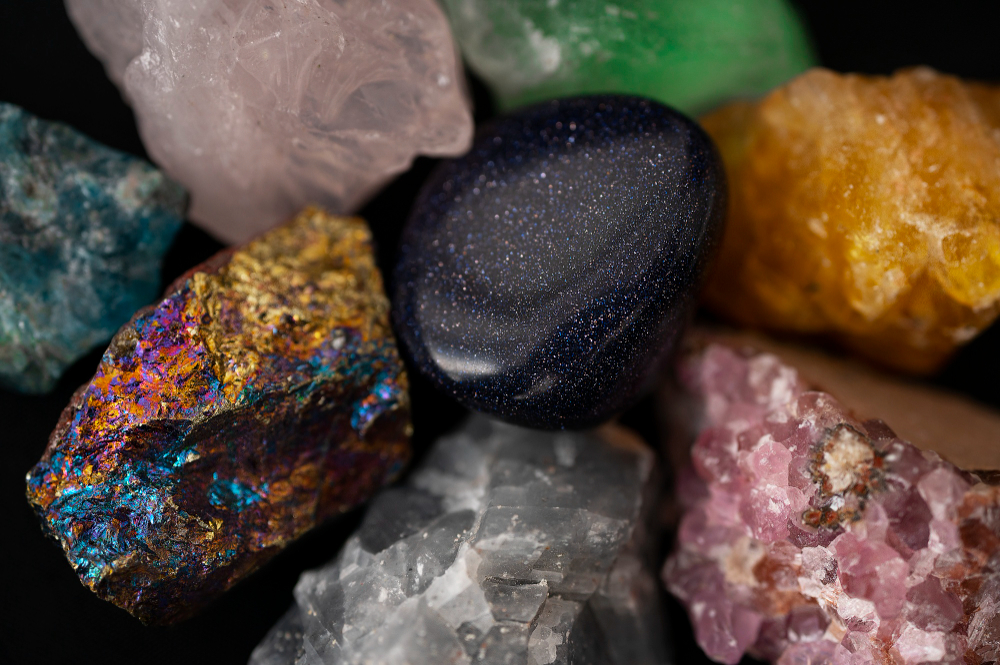Tourmaline stands as one of Earth’s most dazzling and versatile minerals, celebrated for its breathtaking array of colors. For centuries, this gemstone has enchanted collectors, jewelers, and enthusiasts alike. Its unique beauty and rich history ensure its place as a cherished ornament in cultures around the world.
A Rainbow of Possibilities
Few gemstones can rival Tourmaline’s kaleidoscope of colors. Often hailed as the most colorful gem on Earth, its hues range from soft pastels to strikingly vivid shades. This diversity arises from its complex crystal composition, with elements like iron, magnesium, lithium, and aluminum blending in myriad ways to produce a stunning palette. Some stones even showcase multiple colors within a single crystal, earning names like “bicolor” or “tricolor” Tourmaline.
Among its many varieties, Rubellite—a vibrant pink to red shade—stands out for its deep, rich tones. Green Verdelite and the serene blue Indicolite are equally captivating. Perhaps the most whimsical of all is Watermelon Tourmaline, a gem that mimics the fruit with its pink core encased in a green outer layer.
From the Depths of the Earth
Tourmaline is a silicate mineral that forms under unique geological conditions. It emerges in igneous and metamorphic rocks, such as granite and schist, often crystallizing in pegmatites where slow cooling allows large, well-formed crystals to grow. Some Tourmaline crystals can stretch several inches long, showcasing their intricate structures.
This gemstone is sourced from across the globe, with Brazil’s deposits celebrated for their breathtaking variety. California has also produced some of the most impressive Tourmaline specimens, cementing its reputation as a hub for gemstone enthusiasts.
A Gem Steeped in History
Tourmaline has been cherished for centuries, often revered for its mystical qualities. Ancient cultures attributed protective and calming properties to the stone, believing it could ward off negative energy and bring balance to the mind and spirit. By the 19th century, it had gained immense popularity in Europe and the Americas, often seen as a token of luck and positivity.
Even today, Tourmaline retains a spiritual allure. Its spectrum of colors allows for different meanings, with specific hues symbolizing love, prosperity, or healing. Whether worn as a charm or admired in a collection, this gemstone continues to evoke a sense of wonder.
Durable Elegance for Every Occasion
Tourmaline isn’t just beautiful—it’s practical too. With a Mohs hardness of 7 to 7.5, it is robust enough for everyday wear while maintaining its lustrous appeal. Jewelers appreciate its versatility, crafting rings, necklaces, earrings, and bracelets that highlight its vibrant colors. Whether fashioned into classic cuts like ovals and rounds or left in more unique shapes, Tourmaline’s brilliance always takes center stage.
A Gem for Modern Times
In today’s jewelry market, Tourmaline remains a star. Its multicolored varieties are especially sought after, and collectors prize rare specimens with unique color patterns. Beyond its ornamental use, Tourmaline also finds applications in technology, thanks to its piezoelectric properties. These make it valuable in pressure sensors and electronic components.
A Timeless Treasure
Tourmaline’s allure shows no sign of fading. From its captivating colors to its storied history and practical durability, it is a gem that appeals to both the heart and the mind. Whether admired for its metaphysical qualities, its striking beauty, or its scientific marvels, Tourmaline will undoubtedly remain a cornerstone of the gem world for generations to come.



